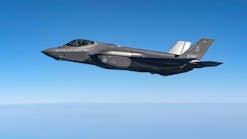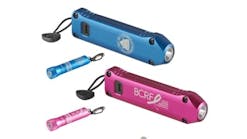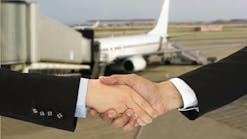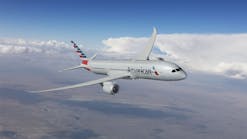They train for accuracy with paintball guns inside mock airline cabins. They use bullets designed to stop and expand in flesh to minimize damage to an aircraft.
And they can look like Grateful Dead groupies or supermodels.
The Federal Air Marshal Service sends thousands of armed undercover agents into the skies each day. But now the service is facing more scrutiny than ever after marshals shot a Maitland, Fla., man to death Wednesday at Miami International Airport.
Miami-Dade police are investigating the shooting, the first by marshals since before the terror attacks of 2001.
But it's not the first time the program has come under scrutiny.
Federal reports released since the program's rapid expansion after the Sept. 11 attacks found that background checks of agents were often too lenient, discipline problems existed among marshals and firearms testing was often inconsistent.
Now, the training regimens are in the cross hairs as critics analyze the frantic moments that led up to the marshals' firing on 44-year-old Rigoberto Alpizar on the jetway outside an American Airlines flight bound for Orlando.
However, air-marshal service spokesman Dave Adams said the marshals acted appropriately in line with their training.
Marshals are trained to watch passengers at the gate before they board, keeping an eye on who congregates with whom and who could be capable of hijacking a plane, said one air marshal who insisted on anonymity because they generally are not allowed to speak to the media.
In flight, marshals say, they use common police sense, watching travelers' hands and whether groups gather near the bathrooms.
"If someone is going to attack, you watch the hands," the air marshal said. "That's what they use."
Air marshals are trained in military-style tactics and typically don't intervene in an incident unless it escalates, the marshal said.
"Unless the situation is out of control, we never come out from undercover," he said. "It could be a diversion" to unmask marshals so terrorists can unfold their real plan later, he said.
Marshals typically go through two phases of training, including courses on cockpit familiarization, emergency evacuation and advanced marksmanship at a facility in Atlantic City, N.J., according to federal reports.
Adams said marshals also are trained in a course called "Managing Abnormal Behavior," which deals with mental illness, among other issues.
With an emphasis on firearms training, marshals run through scenarios in mock aircraft cabins, using paint guns to assess their accuracy, said Leroy Thompson, who says he has trained air marshals in the United States and internationally and wrote a book on counterterrorism called "The Counter-Insurgency Manual."
The marshals use bullets designed to stop once they penetrate a body, lessening the risk that other passengers would be hurt or the structure of the cabin damaged.
They work in teams of at least two. For a while, marshals were ordered to wear suits and ties, but they thought that compromised their covert status and now again wear street clothes.
Thompson said he knew one marshal who often dressed as though he was headed to a Grateful Dead show, while a female agent could dress like a model or a "frumpy housewife."
Marshals have "as much or more firearms training than any other federal agent," Thompson said.
However, the marshal who insisted on anonymity said most incidents involving passengers concern those with mental disorders or who exhibit "stupid behavior," such as drunkenness or mixing medication with alcohol. Since the program began a large-scale expansion in 2001 from 50 marshals to today's thousands, its administration has shifted among agencies at least four times, including from the Transportation Security Administration to Immigration and Customs Enforcement and, most recently, back to TSA.
A report by the Government Accountability Office released in November found that there were few opportunities for career expansion for marshals and that the program was failing to track and follow up on incidents that compromised marshals' anonymity.
The latter problem was addressed, but it is unclear how TSA will keep qualified marshals on the job.
An August 2004 report by the Department of Homeland Security's inspector general found the program experienced several problems.
In 2002, flight marshals were cited for instances of improper flight conduct, lost or stolen equipment including weapons, failed training and sleeping on duty, according to the report.
But the marshal service disputes some of those findings, and marshals say their performance since Sept. 11 has been good.
American Airlines Capt. Denny Breslin, a pilot and a spokesman for the American Airlines pilots' union, said pilots support the marshal service and see the need for more marshals and specially trained, armed pilots.
Breslin said he works closely with marshals on his flights, typically having a briefing with them on the aircraft before passengers board.
"The crew members know they are on board and what to communicate to them," Breslin said.
Breslin said the death of Alpizar, who had been diagnosed with bipolar disorder, is a consequence "nobody wants to occur."
"You can't tell if a guy's lying. You can't tell if he's taking his lithium that day. You don't know if he's a trained terrorist or a goofball, but the results are the same," Breslin said.
------
News stories provided by third parties are not edited by "Site Publication" staff. For suggestions and comments, please click the Contact link at the bottom of this page.





